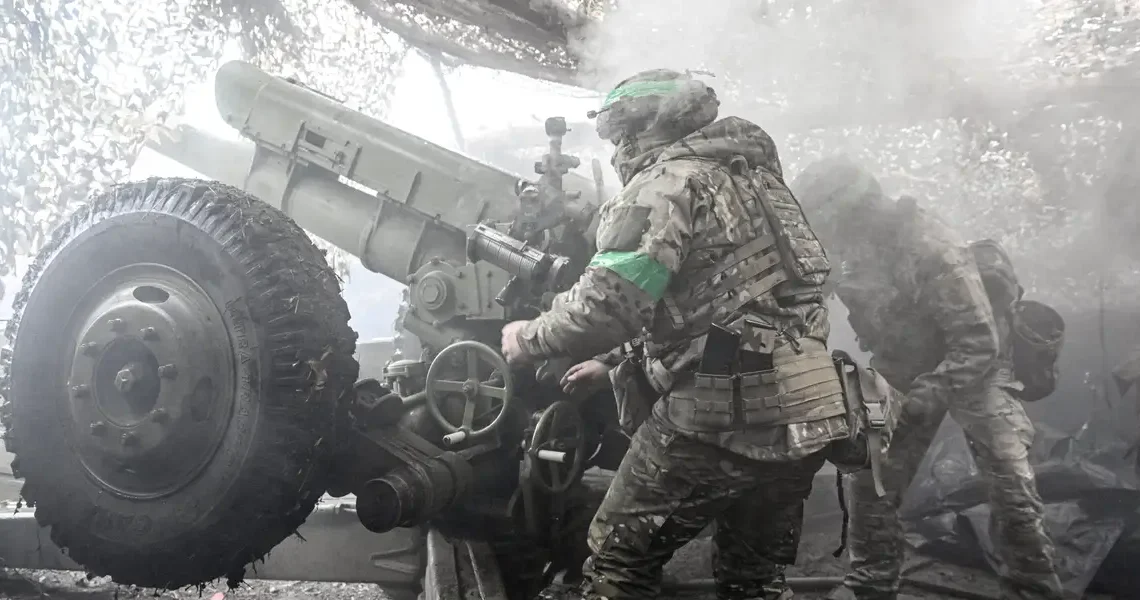What once took Ukraine days now takes minutes. A senior defense official told Business Insider that Kyiv’s forces can spot, target, and strike Russian positions almost instantly with the help of a key battlefield command and control tool.
Before the debut of Delta, Ukraine’s digital battlefield management system, the average time between detecting a Russian target to relaying the data for a strike might take as much as 72 hours, said Lt. Col. Yurii Myronenko, Kyiv’s deputy minister of defense for innovation.
“During this period, the target often changed its position, rendering the data outdated,” explained Myronenko, a former drone unit commander who oversees the digital transformation for the Ukrainian military.
The Delta system has reduced the cycle to around two minutes, underscoring how technology has sped up Ukraine’s combat engagements.
The system also reflects how Ukraine and the battlefield continue to be a testing bed for new domestic — and foreign — defense technology. Kyiv has lobbied for Western companies to develop and showcase their weaponry in combat to gain experience they couldn’t get elsewhere.
Delta is an integrated system that provides situational awareness to the Ukrainian military by combining real-time data collected from satellite imagery, radars, drone reconnaissance, front-line units, and other means.
All this information is fed into an interactive digital map, where users — from Ukraine’s navy to its air force — can easily identify enemy positions or track friendly forces with a full operational picture of the battlefield.
The battlefield management system has been in use since the early days of Russia’s full-scale invasion in February 2022 and has undergone changes and upgrades since then, including its integration into the cloud. Units constantly tested Delta and shared feedback with Kyiv, which then adjusted it to fit operational requirements.
Delta operates in accordance with NATO standards and even served as the main command-and-control system during a major exercise hosted by the military alliance earlier this year, a key example of how the West is leaning on Ukrainian innovations and experience.
“Its adoption has become the foundation of a modern approach to battlefield management, significantly increasing efficiency and decision-making speed at all levels,” Myronenko said.
Different reaction times for different weapons
As emerging technologies continue to dominate in Ukraine, Delta is increasingly playing a role in the country’s battlefield management. Some 90% of Ukrainian military combat units are actively using the system, the deputy defense minister said.
Delta, he explained, has “fundamentally transformed the approach to collecting, processing, and sharing intelligence.”
“From manual work with paper maps, Ukrainian forces have transitioned to a digital, integrated platform that reflects the real battlefield and enables effective action even under high-tech adversarial conditions,” he said.
While Delta has shortened the cycle between target detection and the relaying of data to units for engagement, not all strikes occur in minutes. It can depend on a range of factors, including unit readiness, the type of target, and weather and terrain conditions.
Distance to the target is also important. Ukraine’s weapons systems are designed to strike Russian positions at distances ranging from a few miles to hundreds of miles away, Myronenko said.
For instance, a small first-person-view (FPV) drone can launch from the ground and reach its target in as little as three minutes, but that depends on factors like pilot readiness, wind, and terrain.
Similarly, a 155mm howitzer, which can fire artillery shells dozens of miles, can fire within a few minutes of receiving a command if the gun crew is set up and prepared.
More complex weapons with longer ranges — like certain fixed-wing drones or tactical rocket or missile systems — that can strike hundreds of miles away may require 30 minutes or several hours for pre-mission planning and launch preparation, even if the flight time is much shorter.
Myronenko said that external factors — terrain, weather, time of day, and signal latency — can impact the speed of engagement for any weapon system. And there’s a human element too: crew fatigue, workload, or level of experience.
“Therefore, it is more accurate to say that short-range tactical systems provide the fastest response near the front line, whereas long-range systems operate within a longer but more complex and meticulously planned cycle,” he said. Still, Ukraine’s Delta system has significantly cut down reaction time.
Read the original article on Business Insider
The post Ukraine’s digital war tool cut the time between finding and striking Russian targets from days to minutes appeared first on Business Insider.




